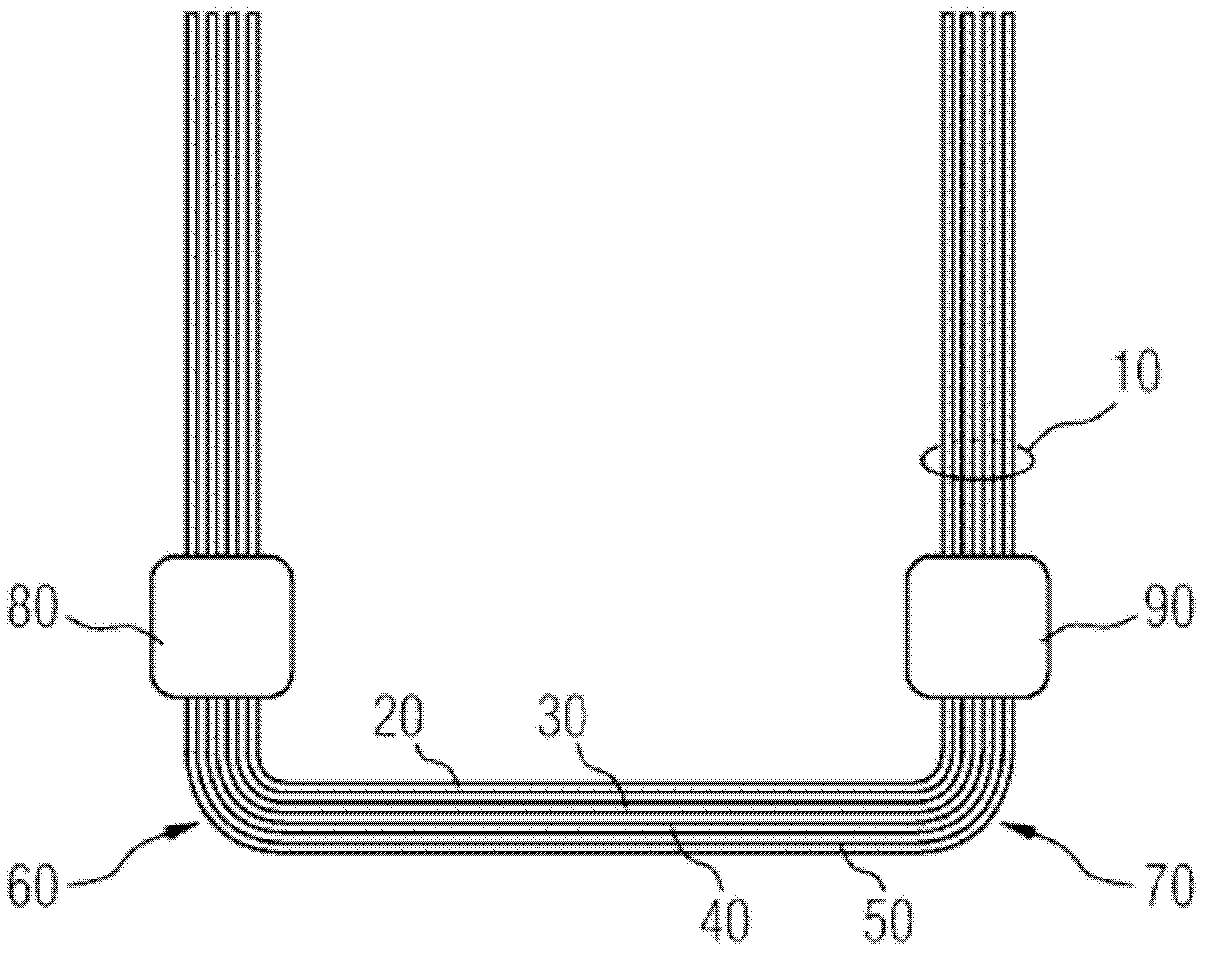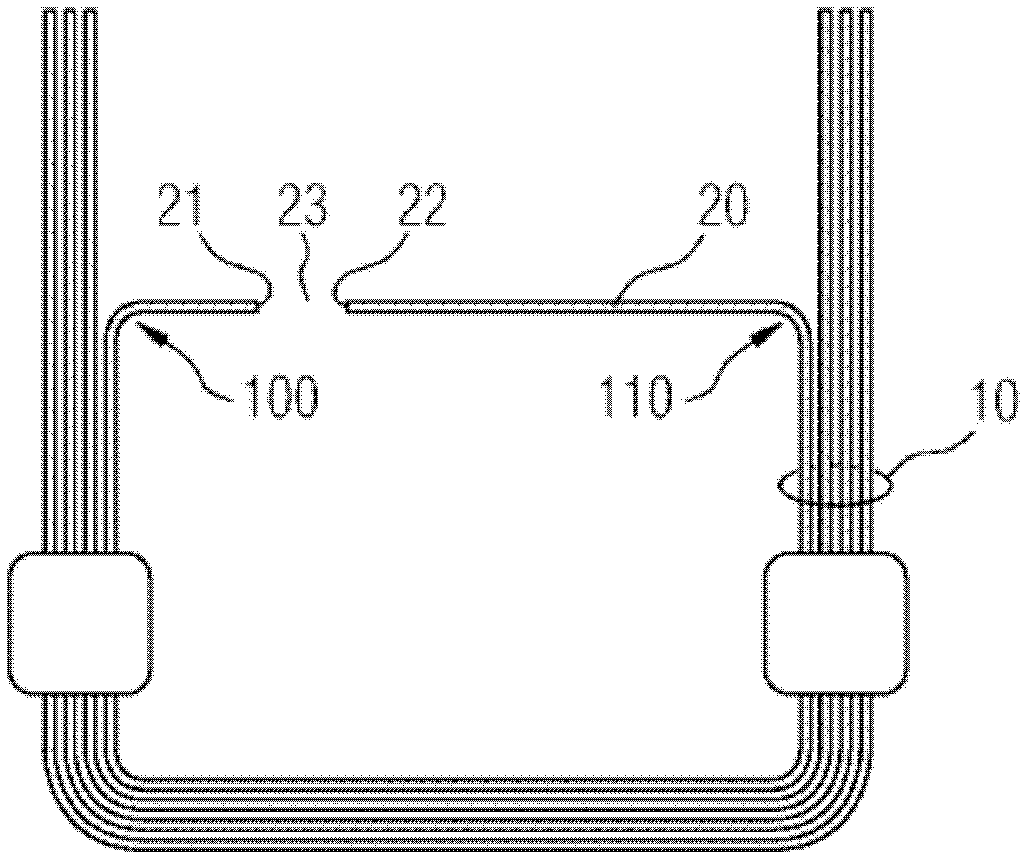Transformer core
A transformer core and transformer technology, which is applied in the manufacture of inductors/transformers/magnets, parts of transformers/inductors, magnetic cores/yokes, etc., to reduce core noise, avoid repeated magnetization losses, and reduce electrical losses Effect
- Summary
- Abstract
- Description
- Claims
- Application Information
AI Technical Summary
Problems solved by technology
Method used
Image
Examples
Embodiment Construction
[0027] exist figure 1 A lamination stack 10 is seen in , which is formed by a plurality of transformer laminations, wherein, in figure 1 Four are shown as examples in , and are denoted by reference numerals 20 , 30 , 40 and 50 . The transformer laminations are made, for example, of a ferrosilicon alloy with soft magnetic properties, that is to say, for example, of so-called silicon steel sheet material.
[0028] The thickness of the transformer laminations is, for example, in the range of 200 to 600 microns. In order to achieve electrical insulation between the transformer laminations, the transformer laminations are preferably provided with a thin electrical insulation layer, which can have a thickness in the range of 1 micron to 5 microns, for example. For clarity, in figure 1 The electrically insulating layer is not shown in detail.
[0029] exist figure 2 A lamination stack 10 can be seen in , in which the transformer laminations 20 , 30 , 40 and 50 are each bent ...
PUM
| Property | Measurement | Unit |
|---|---|---|
| thickness | aaaaa | aaaaa |
Abstract
Description
Claims
Application Information
 Login to View More
Login to View More - R&D
- Intellectual Property
- Life Sciences
- Materials
- Tech Scout
- Unparalleled Data Quality
- Higher Quality Content
- 60% Fewer Hallucinations
Browse by: Latest US Patents, China's latest patents, Technical Efficacy Thesaurus, Application Domain, Technology Topic, Popular Technical Reports.
© 2025 PatSnap. All rights reserved.Legal|Privacy policy|Modern Slavery Act Transparency Statement|Sitemap|About US| Contact US: help@patsnap.com



